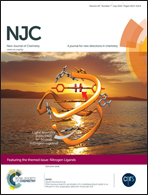Influence of inlet gas composition on dimethyl ether carbonylation and the subsequent hydrogenation of methyl acetate in two-stage ethanol synthesis
Abstract
Ethanol was synthesized indirectly from dimethyl ether (DME), CO, and H2 using a system of two fixed bed reactors in series. In the first stage of DME carbonylation over an HMOR catalyst, the presence of H2 decreased DME conversion and methyl acetate (MA) selectivity by suppressing the reaction of CO with the intermediate methyl. In the improved scheme, H2 was introduced directly into the following MA hydrogenation stage. As a result, the high DME conversion was maintained. The in situ Fourier transform infrared spectra of the Cu/SBA-15 catalyst show that CO was adsorbed mainly on Cu+, which disrupted the balance between Cu+ and Cu0 in the hydrogenation. Moreover, methane and some methanol were generated by the hydrogenation of methyl and methoxyl groups derived from DME decomposition.


 Please wait while we load your content...
Please wait while we load your content...